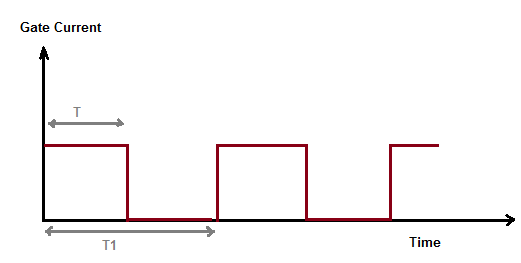There are various methods to turn-on a Silicon Controlled Rectifier (SCR) or thyristor. But the most common way to turn-on an SCR/Thyristor is the application of Gate Signal to a forward biased SCR. This method of turning on an SCR is called Gate Triggering. In this post, we will discuss the various condition required to turn-on an SCR or thyristor.
Following conditions must be satisfied for turning-on SCR with gate signal:
- The first and most important condition is that, SCR must be forward biased. This means that the anode voltage should be more than the cathode voltage. In other words, anode voltage should be positive with respect to cathode voltage.
- Gate pulse width must be more than the SCR turn-on time. Why? This basically ensures that the anode current exceeds the latching current before the gate signal is removed. In case, gate signal is removed before anode current reaches latching current, SCR will not turn-on. Generally, the gate pulse width is taken as equal to, or greater than, the SCR / thyristor turn-on time (ton). If T be pulse width, then T ≥ ton

However, the width of gate pulse must be so chosen that, the gate power dissipation at any instant of time should be less than the peak instantaneous gate power dissipation Pgm allowed by the manufacturer. Let us calculate the width of gate pulse and frequency of firing assuming gate pulse amplitude Pgm, pulse width T and periodicity T1.
PgmT / T1 ≥ Pavg
Since 1/T1 = f, therefore
PgmTf ≥ Pavg
Pavg / (fT) ≤ Pgm
Thus the gate pulse width and firing frequency must be so chosen that,

- Anode to cathode voltage must be more than finger voltage. Finger voltage is that voltage below which SCR / Thyristor cannot be turned on with gate signal.
- Magnitude of gate current must be more than the minimum gate current required to turn-on an SCR or thyristor otherwise the thyristor turn-on may not be reliable. Again, this does not mean that we can choose any higher value of gate current to turn-on an SCR. In fact, there is always a limit on maximum allowed gate current. Above the maximum allowed gate current, the gate triggering circuit may get damaged.
- The most important point in turning-on an SCR is that, gate triggering must be synchronized with the AC supply.